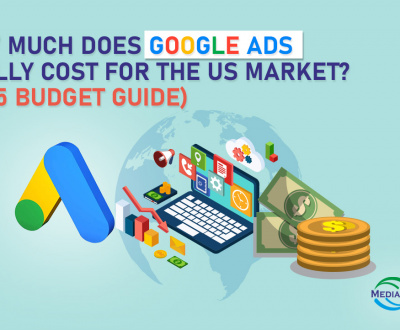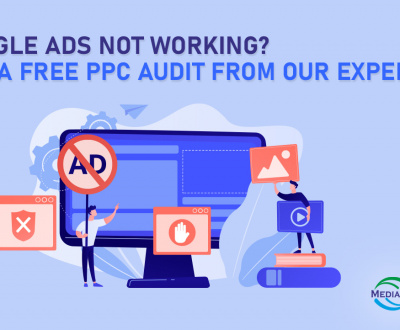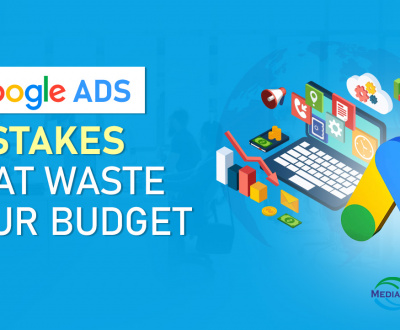Why Google Ads Is Still the #1 ROI Channel for Small Businesses?
- October 5, 2025
- PPC ads
Some small and medium businesses are skeptical about PPC ROI. They fear that established companies can easily outbid them for popular keywords. They also lack the skills and tools needed for effective PPC management. However, a large number of SMBs think otherwise.
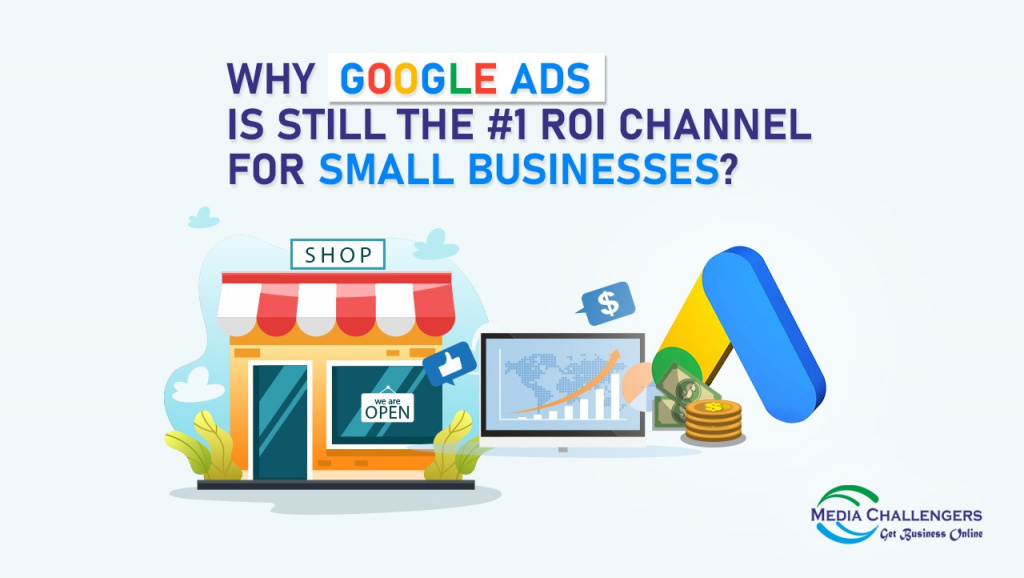
Let’s understand the confusion around PPC ROI from the latest data on SMBs. A recent survey on some SMBs gives a clear picture of whether search advertisements work for SMBs.
- A slight 3.74% increase in click-through-rate (CTR), albeit for a small section of industries, gives hope
- 87% of the surveyed industries reported a high cost per click due to high competition
- 65% of the surveyed businesses reported an uptick in conversion rate
- 13 out of 23 SMBs surveyed reported an increase in cost per lead
The high cost per click, as indicated by most industries, is largely due to increased competition. An increase in conversion rate is an indication of a stable economy. It is also a sign of improved performance by advertisers.
The data shows that Google Ads delivered a good ROI for SMBs in 2025. For this reason, 76% of SMBs surveyed were satisfied with their performance in search advertising.
We are offering a free campaign audit for Google Ads as a simple audit tool to help identify gaps in your campaign settings and take effective measures, boosting performance.
Why Google Ads Still Wins for Small Businesses?
Following are the factors that make search advertising valuable for small businesses:
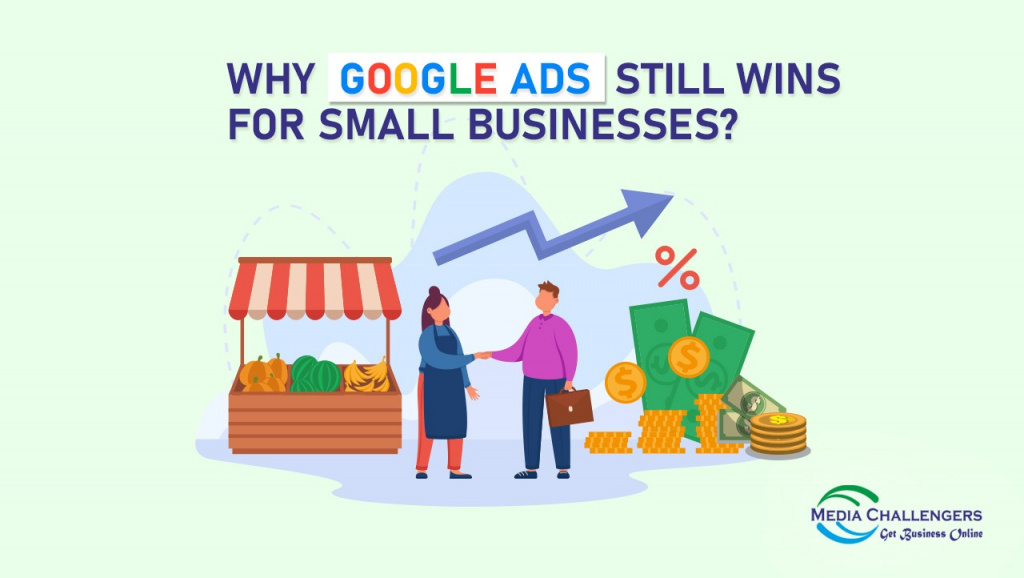
1. Intent-based targeting vs. social media interruption
Intent-based marketing is more focused on potential customers. The targeted users view advertisements relevant to their search intent. Their activity is perceived as readiness to buy. They can buy products or services relevant to their search queries if they are targeted with compelling advertisements.
In social media, advertisements are placed into feeds. Here, users are targeted based on their demographics, interests, and behavior. They can view the ads while scrolling through their social media posts. Social media marketing is more into branding and messaging than selling. Conversely, intent-based marketing gives desired results.
2. Measurability and fast feedback loops
Measurability is the biggest advantage of Google Ads results. Visible in various Key Performance Metrics (KPI), the results show the overall performance of ads. Google Ads also has a structured system of fast feedback loops to deliver performance insights, update negative keywords, bids, and targeting.
Small businesses wary of PPC ROI can monitor their performance using different KPIs and take necessary measures to strengthen the overall output. They can see what works well for the targeted users and optimize their campaigns for better ROI. Running PPC campaigns is an ongoing process that requires professional help.
3. Control over budget and targeting
SMBs can even beat established businesses in Google Ads with smart budget control methods. For example, they can set a limit for daily or monthly spending to prevent overspending. Similarly, setting a maximum cost-per-click ensures value for money and a high ROI.
Targeting is another way to boost the overall performance without exceeding the budget. SMBs can choose favorable locations to run their ads. They can even schedule ads for better results. Researching the most relevant search terms and adding negative keywords can further boost targeting.
4. Scalable performance
SMBs can start with a small budget and increase their ad spend gradually to expand their reach to a larger audience. In this way, they can improve their performance while controlling their budget. The only thing to see is to maintain consistency in KPIs.
The flexibility to scale performance brings SMBs at par with big businesses with higher funds. At least SMBs can stay in competition and try to improve their performance. The only precaution they need to take is to avoid sudden increase in the ad spending.
5. New AI-powered ad features
Google Ads supports businesses. It provides equal opportunities to businesses. The new AI-powered features are introduced to simplify campaign management. The new features are helpful in creating compelling ads and optimizing performance. SMBs should learn to use these features or seek professional help.
SMBs can generate relevant and high-traffic keywords, draft ad copies, and produce catchy headlines. AI can even optimize campaigns, analyse performance, and automate tasks. SMBs have the AI power to maximize their performance with ad spend.
Checklist: Are You Getting the Most from Google Ads?
Most SMBs are performing well. How your ad campaigns are doing depends on various factors. However, you can check whether you’re getting the most from Google Ads.
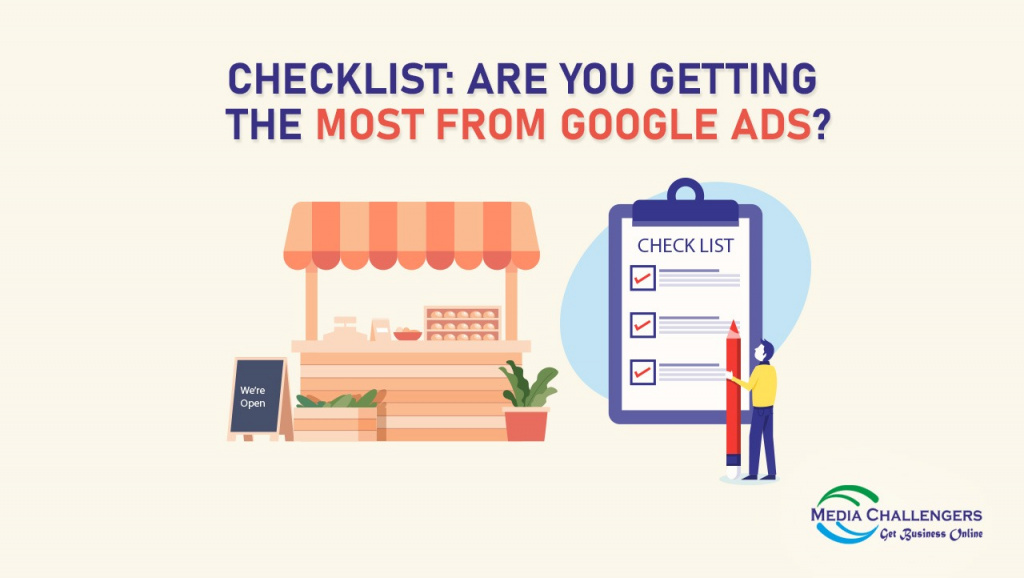
Google Ads ROI Checklist for Small Businesses
1. Tracking conversions properly
Get things right by defining your conversion action in your Google Ads settings and adding a Google Tag, preferably Google Tag Manager (GTM). It is a lengthy process, but it is necessary to get valuable insights into what works well for your ads.
2. Using geo-targeting
Target your audience with content matching their geographic locations, such as countries and cities. The objective of geo-targeting is to reach potential customers residing in specific geographic locations. It works well for local business ads, making location-specific offers, and event-based targeting.
3. A/B testing ads
Always split-test your ads to see which version attracts the most. Create two versions of an ad and split your audience into two segments. Show one ad to one group. Collect on headlines, description, CTA, visuals, and placement to see which ad performs well.
4. Leveraging negative keywords
Prevent your ads from appearing for non-relevant search terms or queries. Analysing search term reports can give you a better idea of which keywords to exclude from your targeted keywords. Use broad match, phrase match, or exact match for negative keywords according to your findings.
5. Ad extensions in place
These are valuable assets for targeted customers. They include phone numbers, website links, and geo-locations. The objective of adding extensions to ad groups is to provide users with additional information that encourages them to take a desired action.
6. Performance Max or Search Campaign setup
SMBs should start with search campaigns with a set of highly specific keywords and continue until they have sufficient data and conversions. Performance Max (PMax) can be introduced at a later stage to broaden the reach. PMax leaves little control in the hands of advertisers.
7. Quality Score above 7
Google rates ads on a scale of 1 to 10. It is called Quality Score and indicates ad relevance and landing page experience. A Quality Score above 7 is considered high. It lowers costs, improves ad position, and helps identify areas for improvement.
8. ROAS benchmarks set
Set your benchmarks, such as the break-even point, where your ad spend is fully covered by revenue. If you are running ads for business branding, you can set a lower ROAS. But if the objective is to drive sales, you will need a higher ROAS.
Want to get the most from your Google Ads? Read the free checklist for PPC ROI and discover proven steps to set up property conversion tracking and optimizing your ad performance.
Red Flags: When Google Ads Isn’t Working
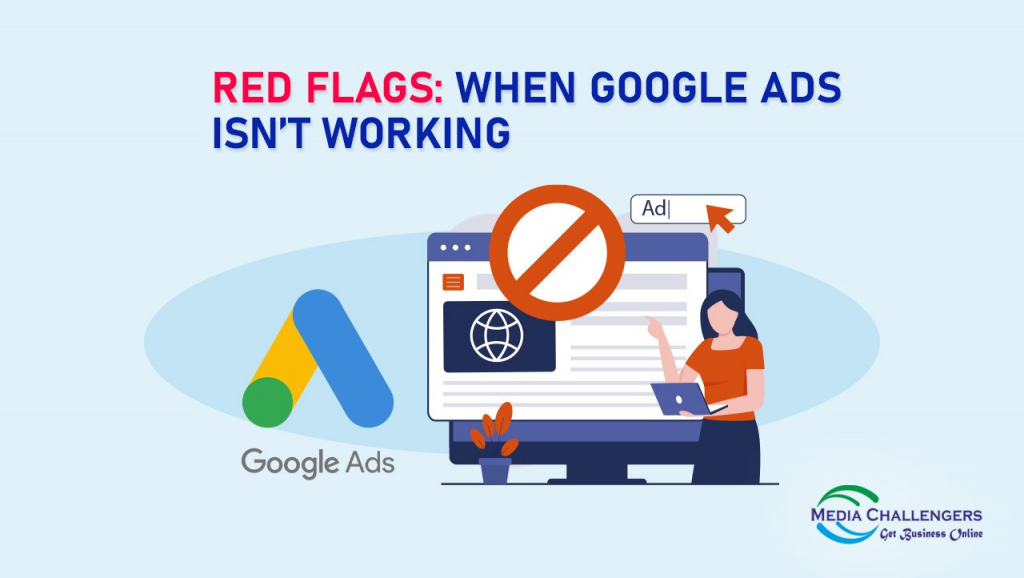
Common mistakes that kill ROI:
1. No clear landing page goal
A landing page is dedicated to an ad group. Viewers should find the landing page aligned with the ads they are attracted to. If they see the page cluttered with irrelevant information, they immediately click back from the page. It will have a negative impact on your overall performance.
2. Bad copy or irrelevant keyword
A poorly drafted ad copy gives no clear message to viewers, and irrelevant keywords create bigger problems. They target the wrong audience, leading to a waste of ad spend. It is a total loss to advertisers. These are blunders that can tank your ad campaigns on day one.
3. Low budget spread too thin
It is wise to start with a low budget, but a thin budget could impact the overall performance of your ad campaigns. The lack of funds could create problems with fund allocation to different channels. In this situation, you will lose even the thin fund allocated to ad campaigns.
4. Poor conversion tracking setup
Poor conversion tracking leads to inaccurate data collection that further leads to poor decision-making and wasted ad spend. You won’t get any insight from your ad campaigns, and it will lead to missed opportunities. Your ROI will plummet to the lowest level, leaving your marketing team in disarray.
5. DIY without expertise
PPC requires a deep understanding of Google Ads. Running paid advertisements without expertise is suicidal for your ad campaigns. You will only see losses and get no knowledge or experience from your DIY attempt at PPC.
“This is how the right setup changes everything from campaign creation to optimization and conversion tracking to landing page designing.”
Case Study: Real ROI Growth Example
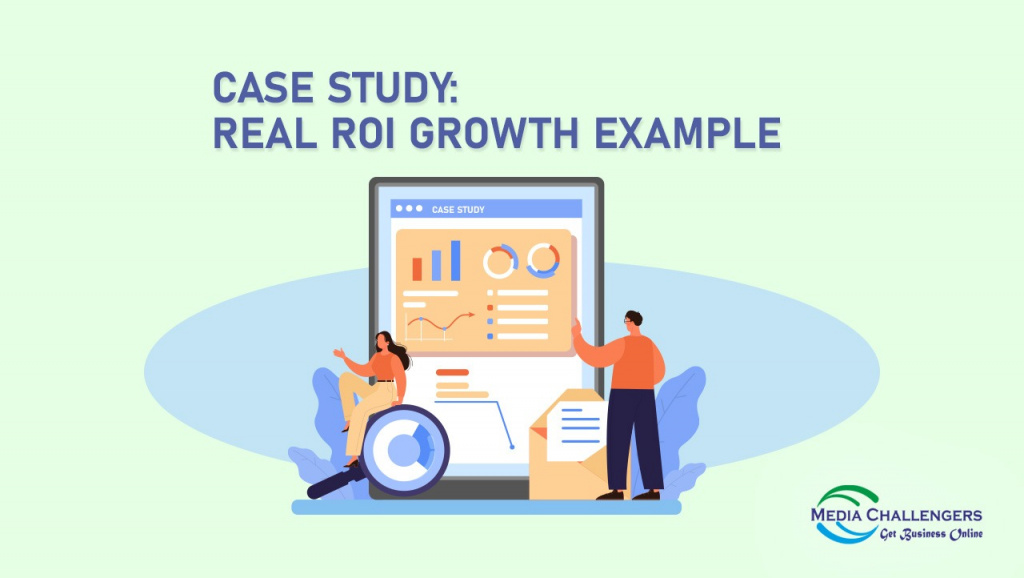
The Business
A small fashion brand selling children’s clothing and footwear ran search advertising for three months with a $1,000/month budget. Despite best efforts, the businesses incurred losses throughout the campaign duration.
What went wrong with the brand’s Google Ads campaign?
The brand hired Media Challengers to look into the matter, and the findings were startling. MC found that the lack of proper conversion tracking was the prime culprit for the losses. Targeting was broad, and the high cost per click was eating into the budget.
See the initial metrics:
- Budget: $1,000/month
- Average Cost Per Click: $2.50
- Total Clicks: ~400
- Conversions: 6 (1.5% conversion rate)
- Cost per Conversion: $166.67
- Revenue: ~$1,200
- ROAS: ~1.2x
First Month Optimization
Media Challengers first set proper conversion tracking, started geo-targeting, added extensions, and leveraged negative keywords to prevent budget waste. It employed a manual setup and prepared compelling ad copies with clear call-to-action buttons.
Metrics after 30 days:
- Budget: $1,000
- Average CPC: $1.80
- Total Clicks: ~555
- Conversions: 20 (3.6% conversion rate)
- Cost per Conversion: $50
- Revenue: ~$4,000
- ROAS: ~4x
Second Month Optimization
With all the basics set right, Media Challengers focused on retargeting past clients with A/B tested ads. Retargeting potential clients with well-optimized, tailored advertisements improved click-through rate, as visible in the metrics.
Metrics after 60 days:
- Budget: $1,000
- Average CPC: $1.60
- Total Clicks: ~625
- Conversions: 25 (4% conversion rate)
- Cost per Conversion: $40
- Revenue: ~$5,000
- ROAS: ~5x
Compare Results
Media Challengers took control of the campaign when over 70% of clicks were coming from irrelevant searches. After two months of rigorous optimization and tracking, the business earned $5 for each $1 spent. Had the brand made the necessary changes at the beginning, it could have achieved the desired results. However, it isn’t possible without professional help.
Key Takeaway
The case study shows that basic settings can improve the results. The brand’s lack of education and expertise in Google Ads led to its failure in paid marketing. However, experts changed the scenario by making basic changes. Google Ads settings are connected, and for this reason, an incorrect step can sabotage the entire ad management.
Conclusion
Want to boost your ad performance on your own? Grab our downloadable PDF checklist for DIY Google Ads managers. Additionally, you can schedule a free Google Ads audit for professional help in ad management. At Media Challengers, we audit campaigns for performance and suggest practical ways to boost the ROI.
If you’re unsure whether your Google Ads are delivering results, we’ll tell you straight—no fluff, no assumptions, or wild guesses. We emphasize what works, what’s missed, and what needs to be strengthened. We provide data-driven, actionable insights that start a series of positive changes leading to improved ROI.
Ready to see your Google Ads performing at their optimum level? Read the checklist to audit your ad campaigns or book your free audit today to save your tomorrow. We can uncover hidden opportunities and offer proven optimization tips that can turn your ad campaigns into profit-making marketing tools.
Media Challengers, led by Birendra Kumar, is the foremost SEO and PPC services company, specializing in implementing a comprehensive range of online marketing techniques to enhance business profitability. As a Google certified agency partner, we bring expertise in SEO (Search Engine Optimization) and PPC (Pay-Per-Click) strategies to drive successful digital campaigns.
Do you want an instant result and traffic?
You are at the right place, we are committed for instant result (Call, Query Form, Traffic, view, etc..) generation. If you have any questions please let me know.
Our last month campaign performance

Recent Posts
- Why Google Ads Is Still the #1 ROI Channel for Small Businesses? October 5, 2025
- How Much Does Google Ads Really Cost for the US market? (2025 Budget Guide) September 25, 2025
- Google Ads Not Working? Get a Free PPC Audit from Our Experts September 7, 2025


